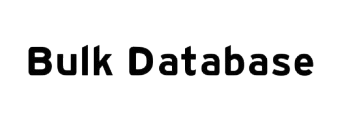What is digitalization about? It’s about standardizing processes and possibly even automating them – with the aim of relieving your own employees so that they can devote themselves to really important to-dos. After all, nobody really needs repetitive, monotonous routine tasks! It’s not without reason that they are considered the number one efficiency killer.
Efficient processes are vital for companies. In order to remain competitive, there is no way around introducing new technologies. But that is only the first step. Technology for its own sake has absolutely no place in companies. It must be easy for employees to use and noticeably relieve their workload in their everyday work – regardless of whether they are a well-trained, digitally savvy university graduate or an old hand who is about to retire. The current “Digital Skills Gap” study by the D21 initiative shows that employees in this country deal with the requirements of digitalization with very different levels of competence. Although the majority have a high level of application competence and use digital solutions and devices confidently, only a few understand the underlying mechanisms and relationships. There are major differences – depending on age, education and type of job.
Actively supporting digital transformation
This makes it all the more important to actively support the digital transformation. Because it begins in the mind of every single employee. While some can’t get enough of “the hot shit,” i.e. digital tools and little helpers, others can barely manage to program their VHS video Denmark Cell Phone Number List recorder. Nevertheless, companies are well advised to take those who are less tech-savvy along on their digitalization journey. This requires, first and foremost, education. Because many fear: “If we digitize this now, will I still be needed? Will my position be rationalized away? Will an AI soon do my job? Do I need to worry about it?”
Digital Skills Gap
According to the study, the ability to access the digital world through understanding and independent learning is particularly dependent on education. Over 60 percent of people with a high level of education can acquire knowledge themselves, and 54 percent feel Cell Phone Number Database confident in helping others with problems. The situation is different for people with medium (36 and 33 percent respectively) and low levels of education (24 and 19 percent respectively). In addition, those with less digital skills are less likely to recognize the need to expand their digital skills.
The digital skills gap can become a problem for companies. They need to talk to their employees, listen to them, and allay their fears. With a well-developed change concept, which of course has to be tailored to the company and its individual situation, such discussions are much more productive than if they were based on gut feeling. Professional change management is often the key that opens the door to employees’ minds. It is no coincidence that the study identifies the development of comprehension skills, understanding the connections and underlying mechanisms of digital applications and devices, as a key task.
Anyone who succeeds in taking this first,
Very important step will see their workforce become more digital step by step. Of course, this change is being helped by the fact that more and more digital natives are working in companies. They use technology as a matter of course, BUT: Often it remains just a matter Bulk Database of using it. According to the study, only 14 percent of those with higher education, including many digital natives, know a programming language. That is nowhere near enough for a comprehensive digital transformation! Neither the employees nor the companies are to blame for this. It is the education system that does not prepare our children well enough. Why don’t all students learn the basics of programming? For now, it doesn’t need to be more than Boolean algebra, an understanding of loops and the like.
Shifting this responsibility onto the companies is too short-sighted. Who is supposed to “do” the transformation? A single department like IT cannot do it. How could it, when in many places it is already at full capacity with the operation of existing systems? Instead, all employees must recognize the digitization or automation potential of their own workplace. Or what is necessary to make their own work more efficient. Ideally, the employee will then be able to optimize the processes themselves. But that is perhaps still an ambitious dream – at least for the time being.


